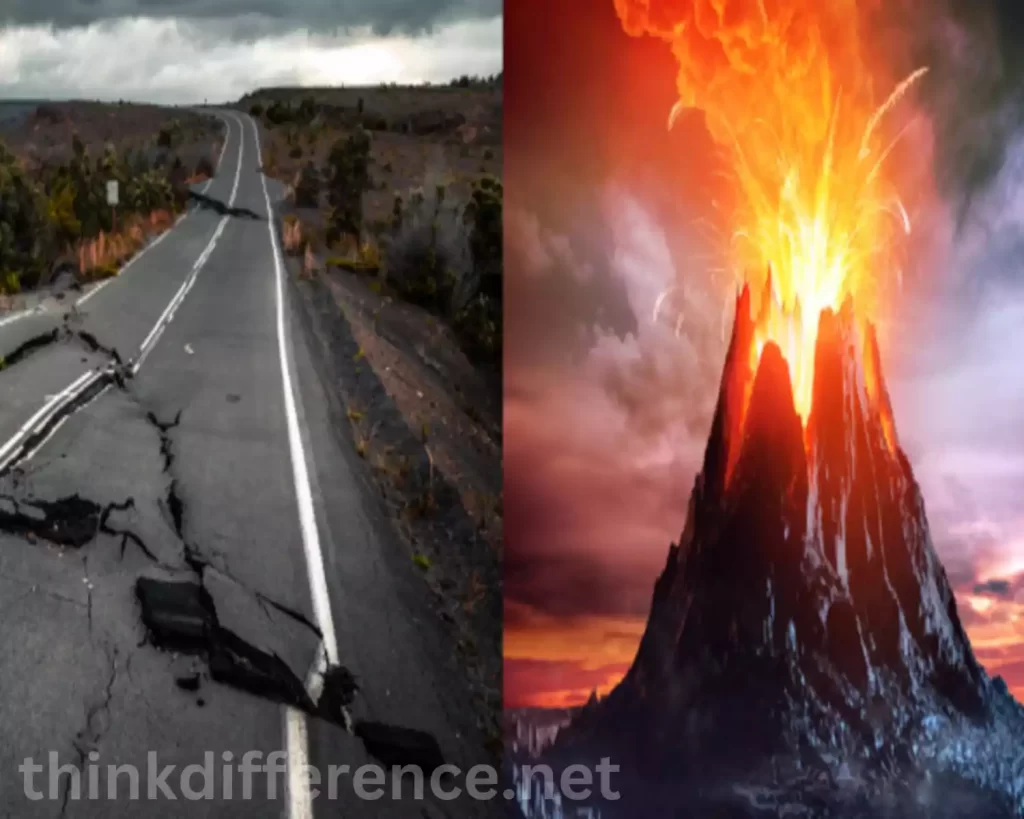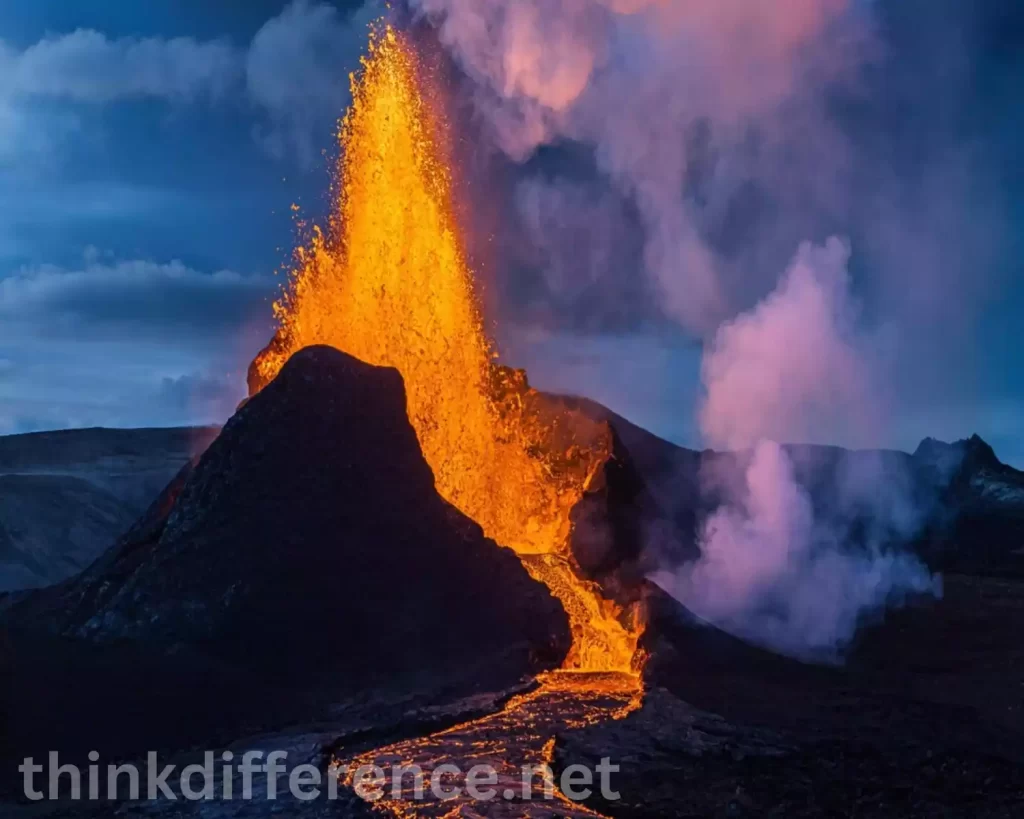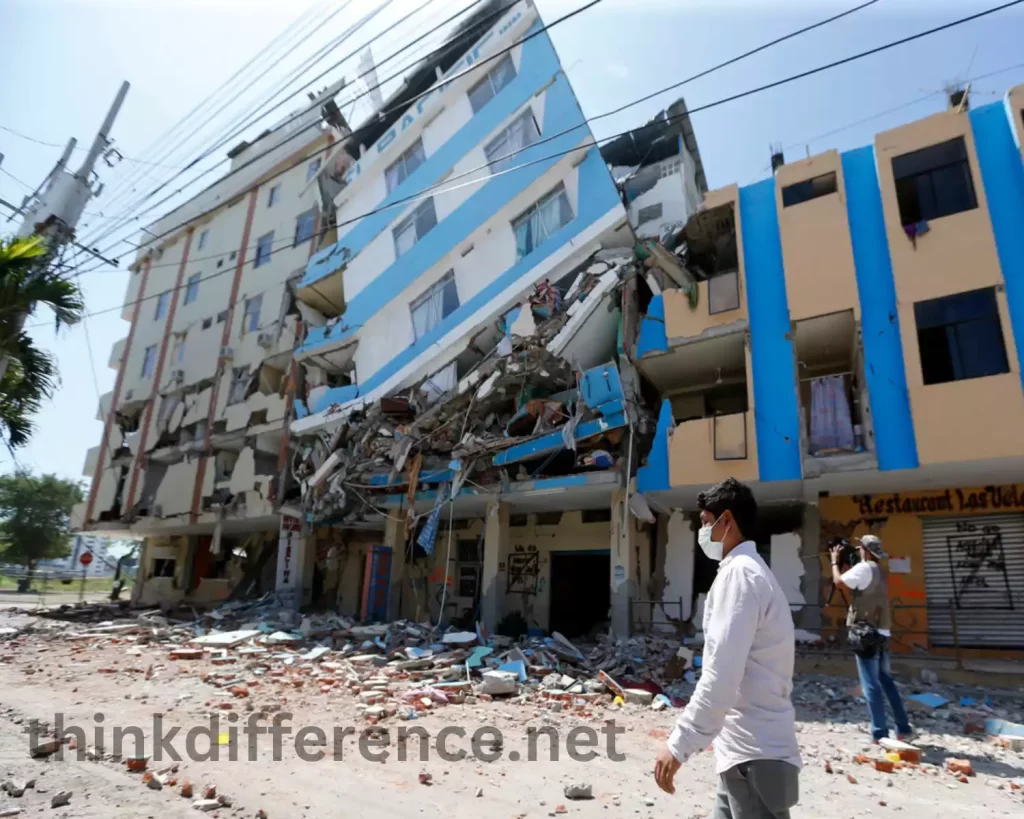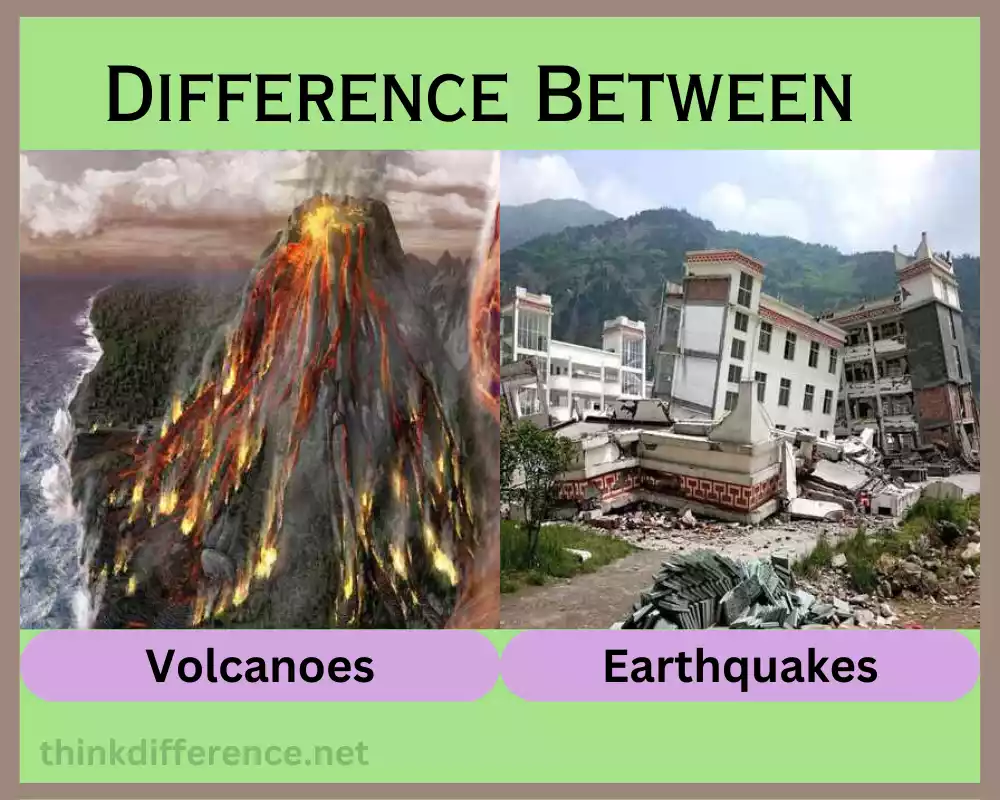A Brief Overview of Volcanoes and Earthquakes
Volcanoes and Earthquakes have caused immense destruction and loss of innocent lives. While students are taught about both events separately, many do not understand what differentiates an earthquake and volcanic eruption despite being taught the difference in detail in school classes. This article attempts to shed more light by providing details regarding both types of natural disasters.

Volcanoes
Volcanic mountains have openings below the earth’s surface that expose very hot groundwater that melts rocks to form magma, rising through openings to collect in chambers visible on mountains as it collects there and can sometimes even come pouring out through cracks and fissures causing eruptions – known as lavas which is actually magma itself!

Lava flows can cause more destruction when thin and moving rapidly than thick and moving slowly; when thin-moving lava releases more gases. Lava may cause massive destruction but rarely kill people since most can escape quickly from its path. Volcanic eruptions become dangerous when coupled with explosions as their ash cloud can kill plants, animals and humans alike; their subsequent mudflows have even submerged entire villages or towns around their locations.
Volcanoes often lie dormant for thousands of years before suddenly erupting, leaving those living nearby unaware of the risk.
Characteristics of Volcanoes
Volcanoes can be captivating natural wonders with many varied physical characteristics and behaviors, and each volcano possesses numerous key qualities that distinguishes itself.
- Volcanic Types and Formation: Volcanoes form due to tectonic plate movements which cause magma to rise from beneath Earth’s surface into eruption points called volcanoes, creating shield volcanoes or cinder cones as examples of volcanoes.
- Causes of Volcanic Eruptions: Pressure build-up can result in volcanic eruptions, as can the presence of volatile gasses within magma and shifting between tectonic plates.
- Physical features: Volcanoes can be recognized by their size, shape and composition; some reaching thousands of metres above sea level while others having smaller, conical shapes.
- Types of eruptions: Types of Eruptions there are various kinds of eruptions. These range from effusive (which involves slow release of lava) and explosive eruptions characterized by violent blasts of ash or rock from violent explosions.
- Environmental impacts: Volcanic eruptions have an enormously detrimental impact on their surroundings, from emitting airborne particles and gases, creating new landforms and wiping out ecosystems to disrupting air supply routes and flood plains.
- Human Impacts of Volcanic Eruptions: Volcanic eruptions have an enormous effect on humanity, often leading to displacement, property loss and even deaths. Volcanoes provide many advantages though such as fertile land or geothermal power production.
Earthquakes
Earth’s interior is not uniformly solid; instead it contains many fault lines where rocks break off during rotation and revolution. Rock movement along these faults releases vast amounts of energy which is released via seismic waves which then shakes and tremors the ground violently, sometimes even leading to buildings collapsing or leading to fatalities and property loss.

Subsurface structures consist of sliding tectonic plates which collide against one another and release energy which causes violent ground shaking; shaking occurring above its epicenter causes extensive damage while this phenomenon (tremoring) gradually declines with distance from its source.
Hollywood movies often create false assumptions of how earthquakes work, with viewers thinking the ground becomes torn away or upturned during an earthquake, although cracks may appear on its surface due to tremor. Earth can be divided into seismic zones according to how often earthquakes have struck in their region in past time, making prediction easier and providing guidance.
Characteristics of Earthquakes
Earthquakes can be fascinating natural events with varied characteristics and effects, yet each has unique qualities and impacts that stand out. Here are a few key attributes of an earthquake:
- Causes: Earthquakes may result from sudden movements of plates beneath our planet’s crust or from human activities like mining, fracking or building dams; both may contribute to earthquakes.
- Types: Earthquakes can come in all forms; from those caused by moving plates (tectonic) and volcanic activity (volcanic) earthquakes to human activities or aftershocks following large earthquakes (induced).
- Physical features: Earthquakes can be measured using seismographs which record vibrations caused by earthquakes. Richter scale measures earthquake magnitude from 0-10.
- Environmental effects: Earthquakes have an immense environmental impact. They can alter landforms, alter rivers and streams, release gases and particles into the environment and more.
- Human impacts: Earthquakes can trigger other disasters like landslides and tsunamis, other disasters could arise as well.
- Preparedness and Mitigation: Numerous measures can be taken to lessen the effects of earthquakes. Including creating earthquake-resistant buildings, installing early warning systems and providing education about seismic safety.
Differences between Volcanoes and Earthquakes
Earthquakes and volcanoes, while both natural phenomena caused by shifting tectonic plates, differ substantially. Here are a few main distinctions.
- Definition and Causes: Earthquakes occur due to sudden movements of Earth crust due to sudden releases of energy; while volcanic eruptions result from openings within Earth crust that allow venting. Both events result from shifting tectonic plates; however earthquakes and volcanoes tend to be caused by magma movement rather than plate shifting alone.
- Physical Features: Both volcanoes and earthquakes possess notable physical characteristics that stand out, including large eruptions or magnitude of earthquakes; each’s features vary widely – Volcanoes can be classified according to size, shape and composition – while earthquakes are determined by depth, location and fault type classifications.
- Effects on the environment and human populations: Volcanic eruptions and earthquakes have very different impacts on humans and the environment; volcanic activity can damage infrastructure and property as well as harm humans and harm their surroundings; while earthquakes cause similar harm while sometimes also sparking disasters like landslides or tsunamis.
- Measures to prepare and mitigate earthquakes and volcanoes: There are various measures available to prepare for and mitigate their effects. Monitoring volcanic eruptions allows prediction while earthquake early warning systems provide advance notice of earthquakes. Additional preventive steps, including evacuation measures for volcanoes as well as measures such as ashfall prevention and evacuation plans can also be implemented during early warning systems for earthquakes. Developed emergency plans should also be considered when building earthquake-resistant buildings for earthquakes occur.
Earthquakes and volcanoes both result from shifting tectonic plates, but differ significantly in terms of definitions, physical characteristics, effects on humans and the environment, mitigation/preparedness measures taken as well as mitigation/preparedness strategies.
Similarities between Volcanoes and Earthquakes
There are certain similarities between earthquakes and volcanoes despite them being distinct phenomena.
Here are a few key parallels:
- Caused by tectonic plates: Movement of tectonic plates is responsible for both earthquakes and volcanoes on our planet, with each piece slowly shifting across it’s crust. The Earth itself consists of these vast pieces which move slowly.
- Can be monitored and predicted: Volcanoes and earthquakes can both be predicted, tracked, and predicted the location where they’ll happen by studying patterns in seismic activity; seismographs allow scientists to use earthquake measurements as well as predict where an earthquake will happen by measuring seismograph readings; volcano activity may also be monitored in several ways including measuring gas emissions from volcanic vents or tracking its shape changes over time.
- Can cause significant damage: Volcanic eruptions and earthquakes both pose severe hazards that have the ability to damage property, infrastructure and human lives. Large earthquakes could trigger landslides and tsunamis while volcanic eruptions have the ability to cause respiratory issues as well as disrupt air travel routes.
- Can provide benefits: Both volcanoes and earthquakes can be destructive, their destructive power may also bring benefits. Volcanic eruptions often generate fertile soil formation and new land formation, while earthquakes expose mineral deposits while producing unique geologic features.
Volcanic eruptions, earthquakes and other natural events vary significantly but all share similar qualities, including their capacity for damage, ability to be monitored or predicted with accuracy, and potential for benefits.
Conclusion
Volcanoes and Earthquakes are awe-inspiring geological events that shape the world we live in. While they pose significant risks to human civilization and the environment, they also offer valuable insights into the Earth’s geology. By understanding their causes and impacts, we can develop better strategies for mitigating their risks and living in harmony with these natural forces.



